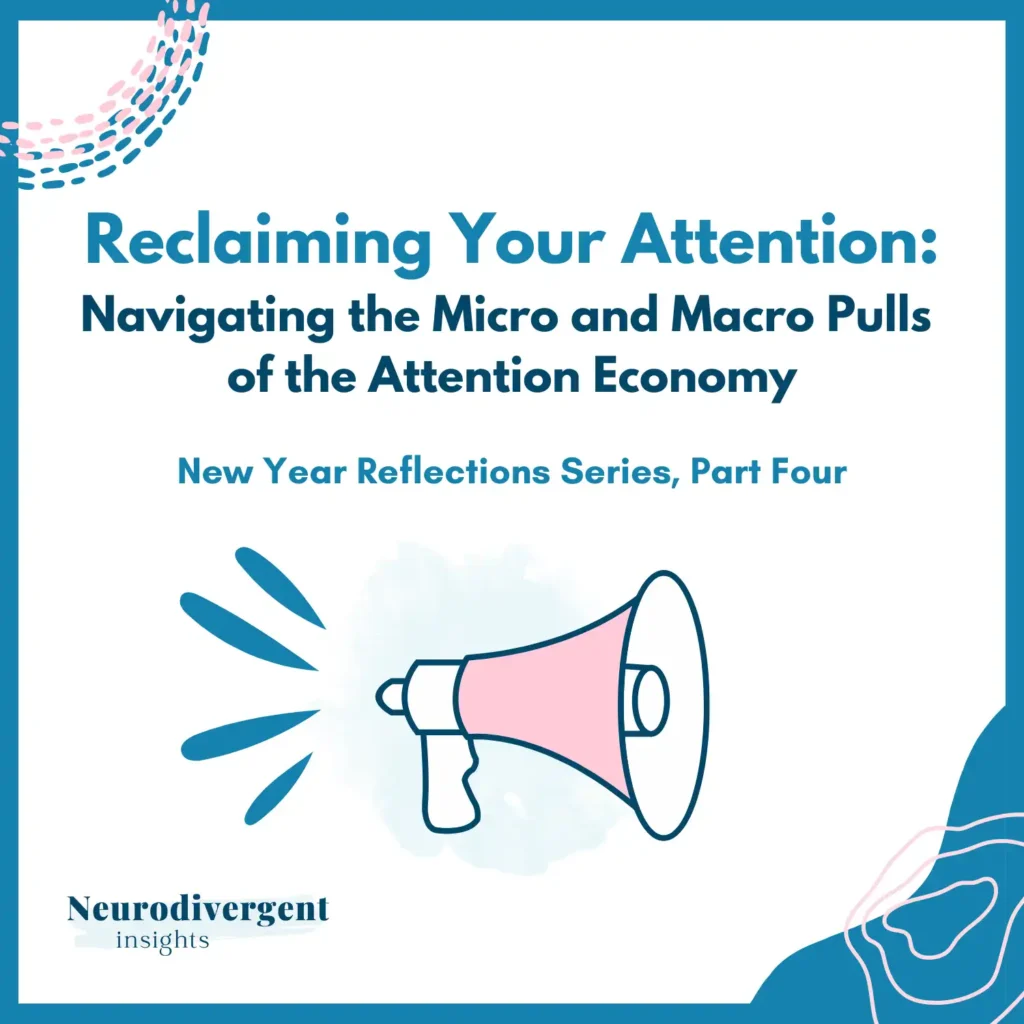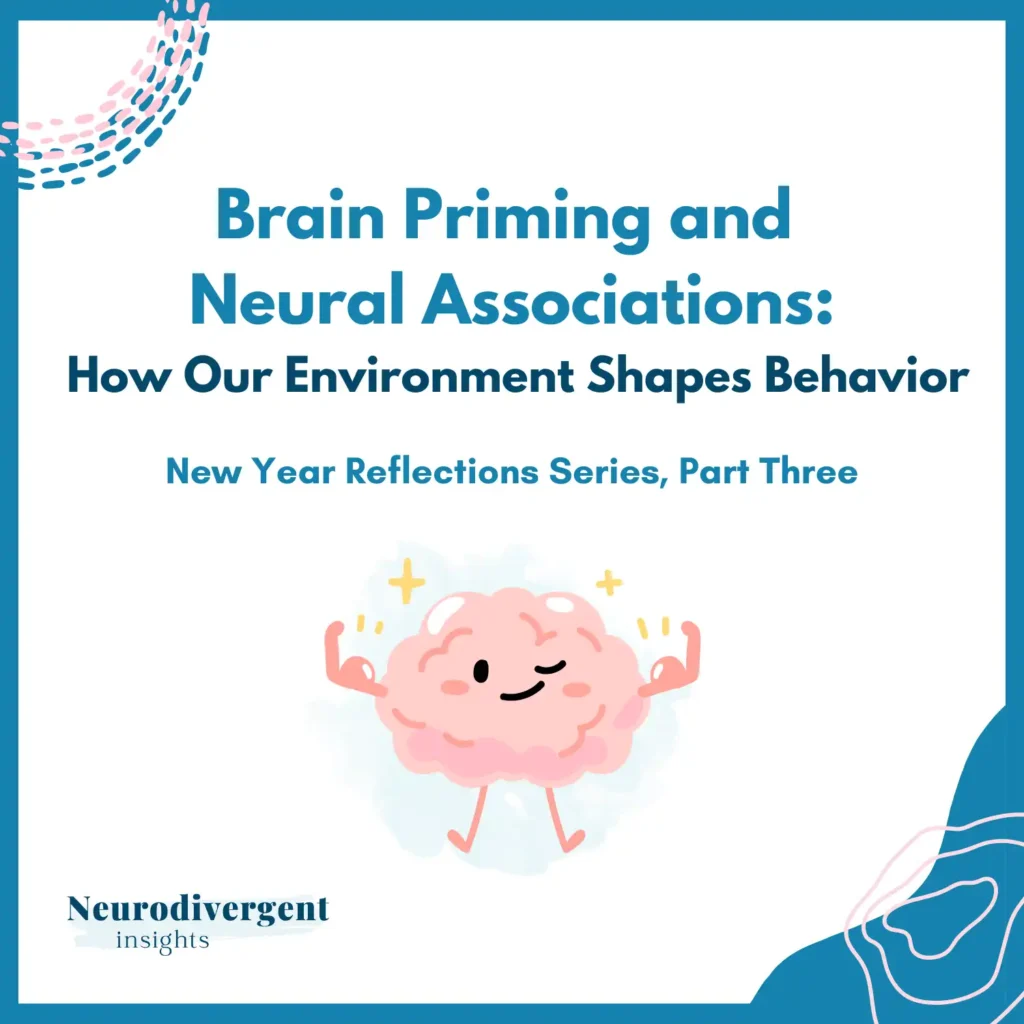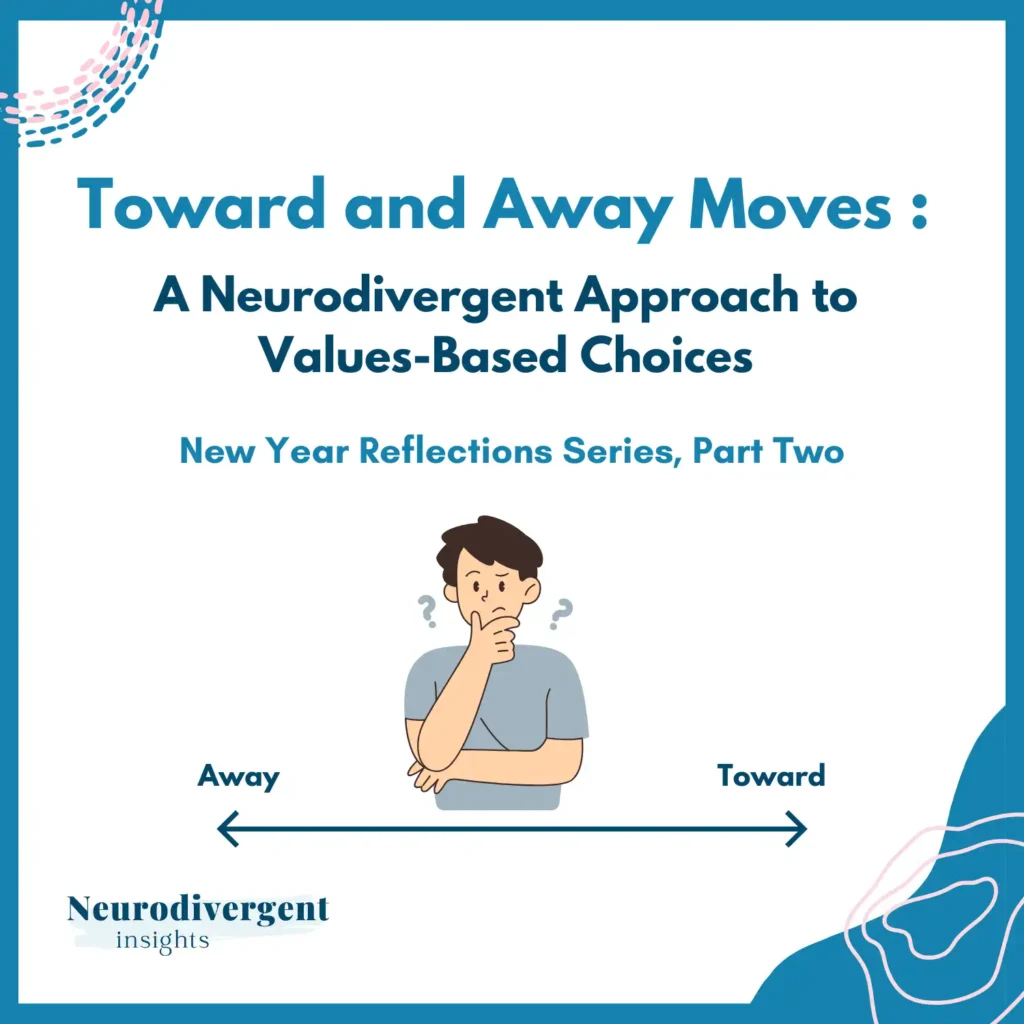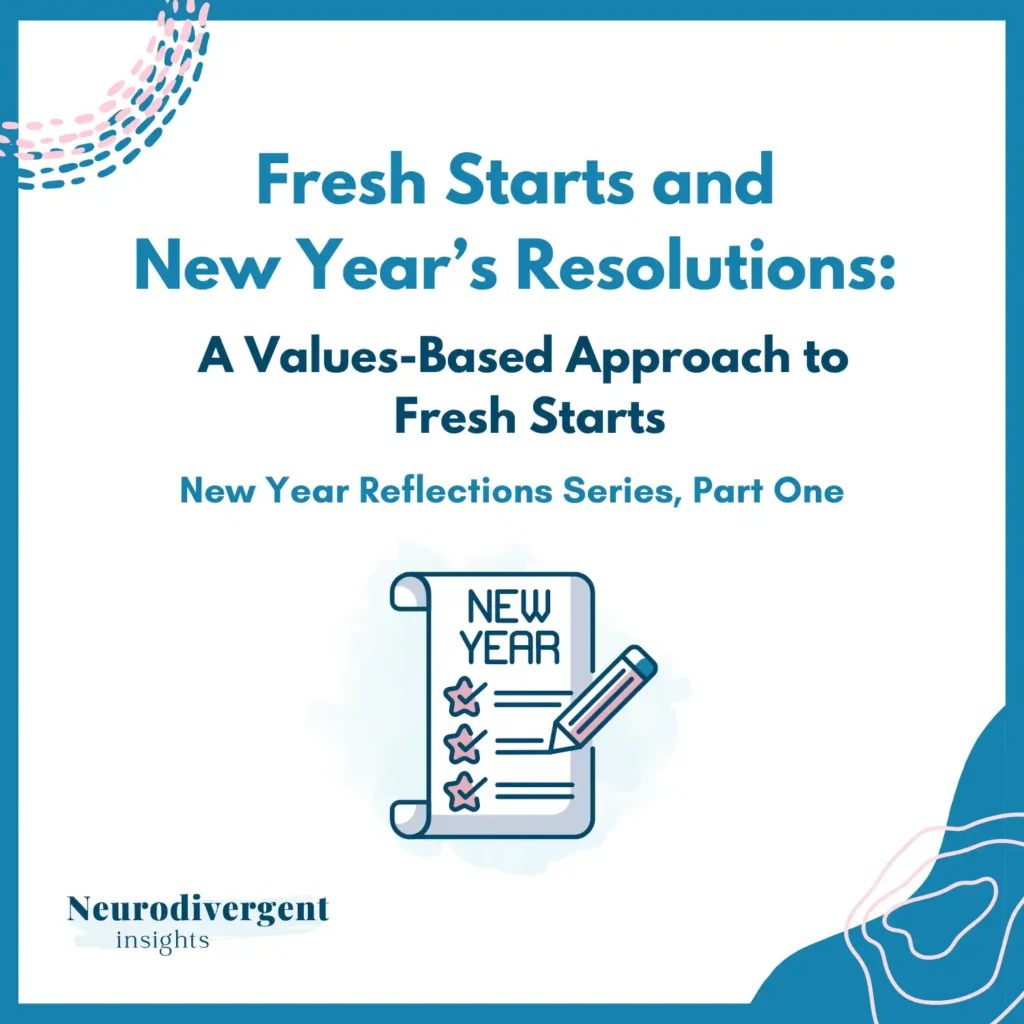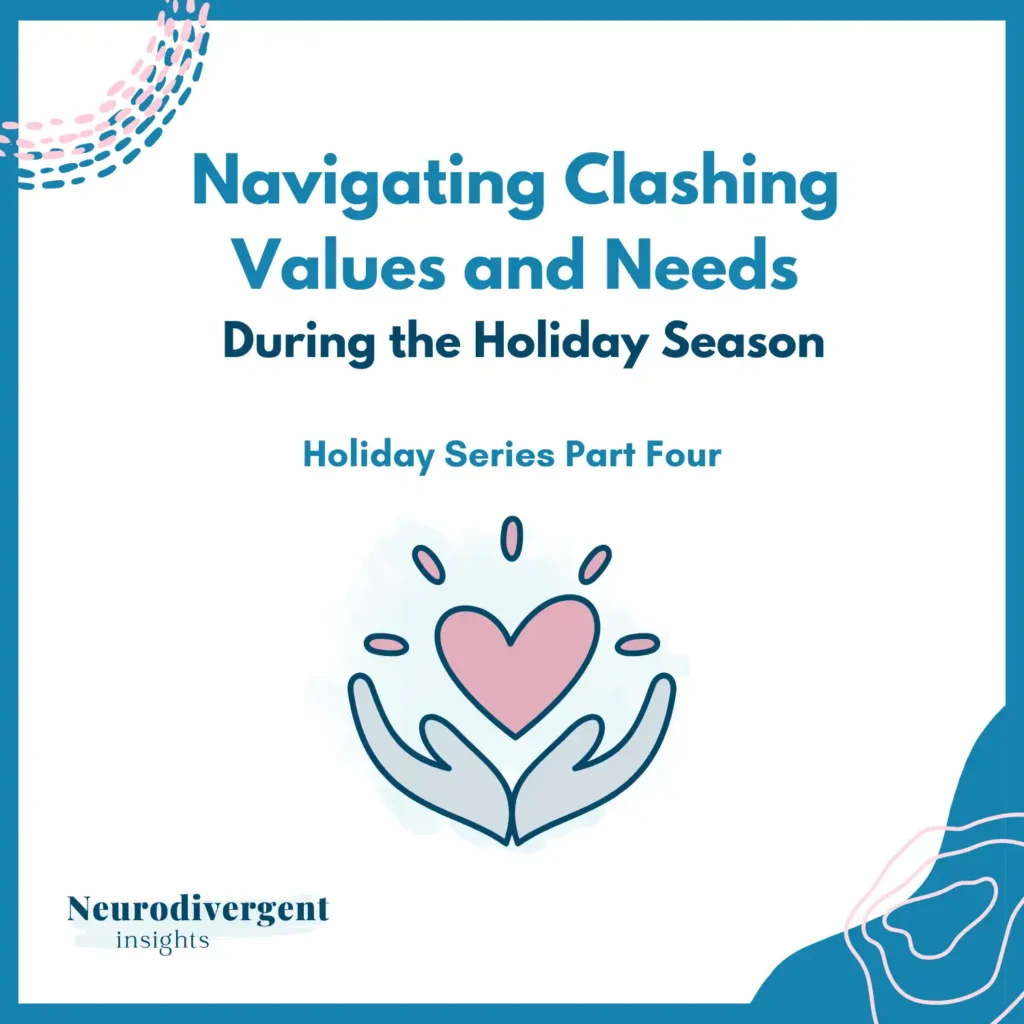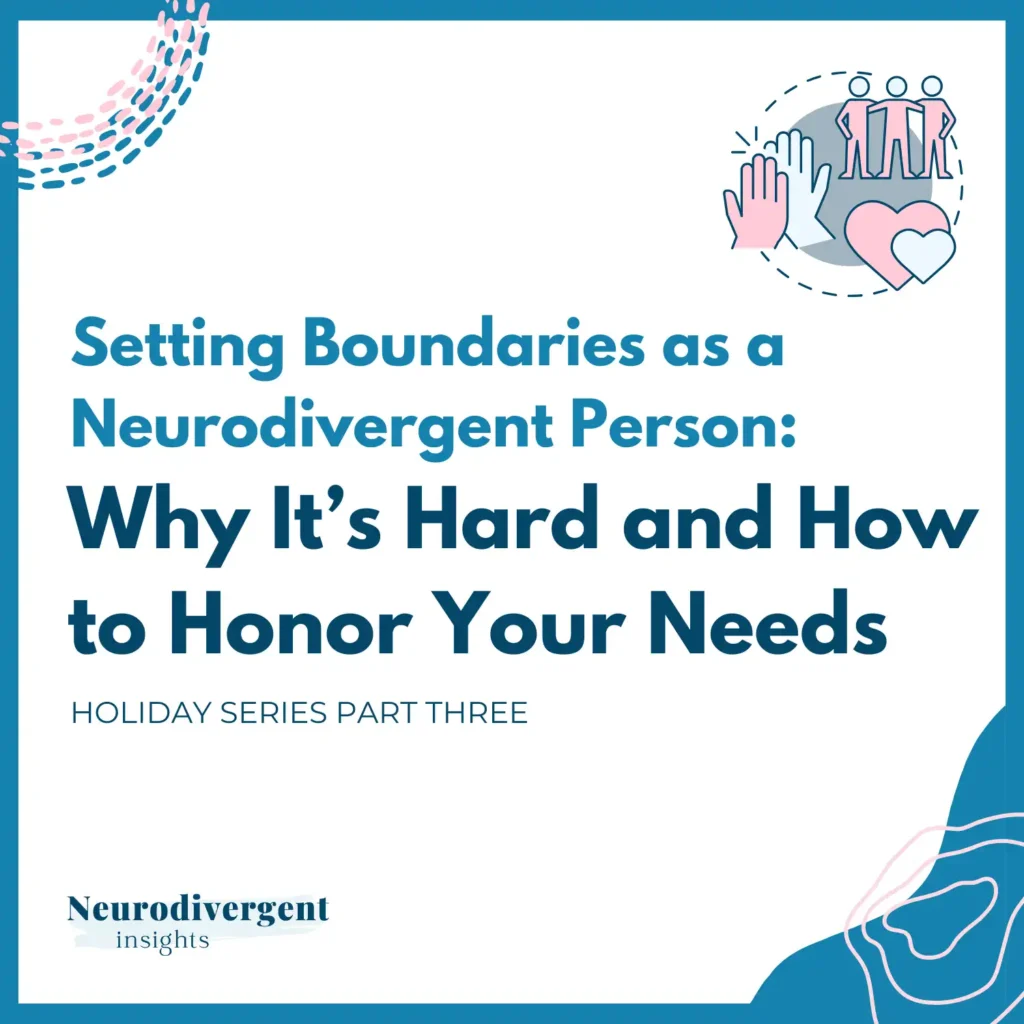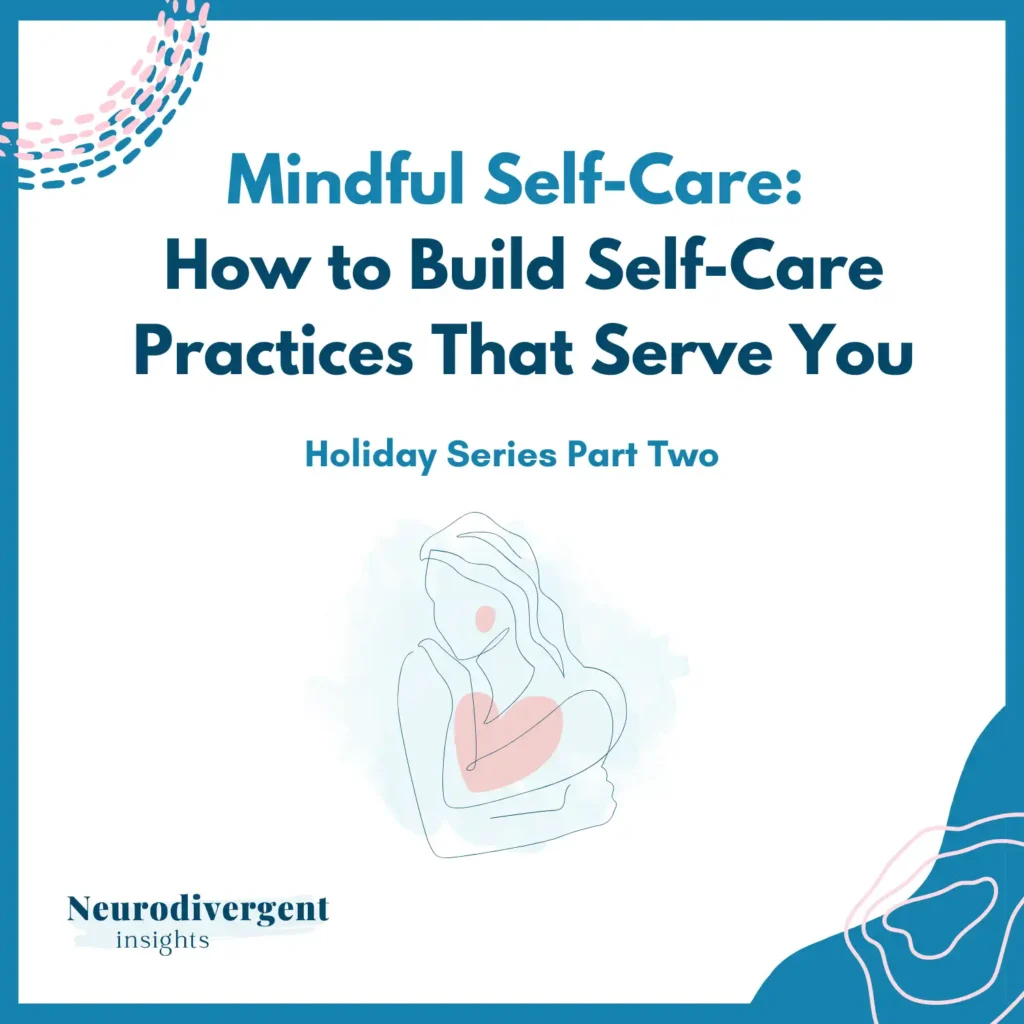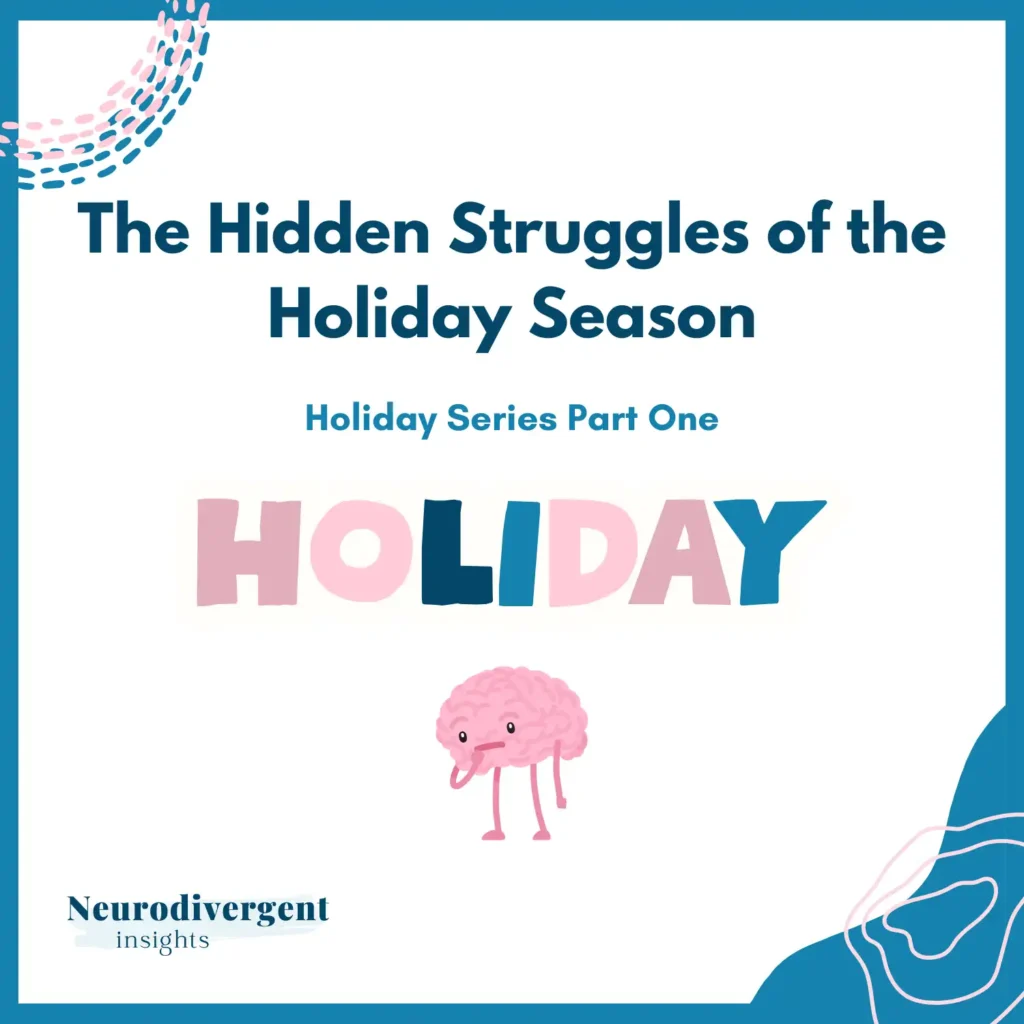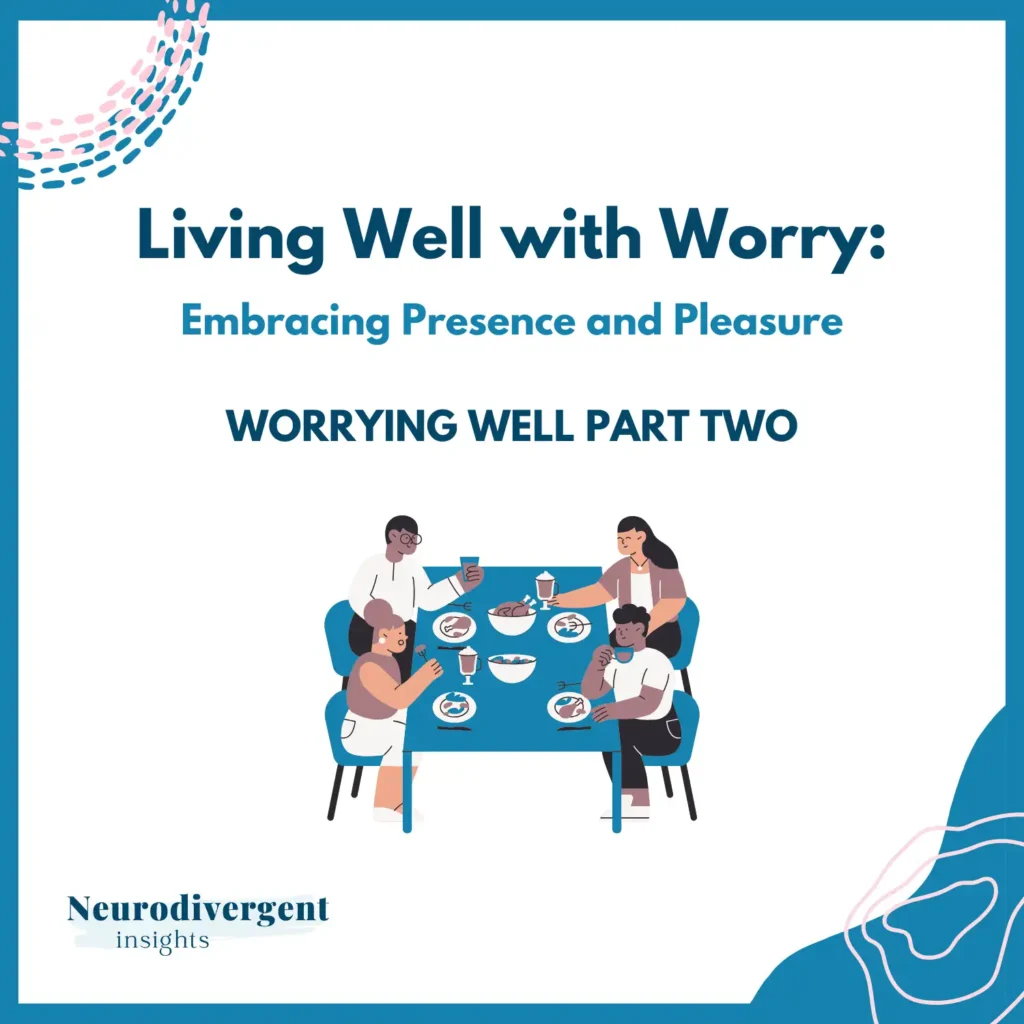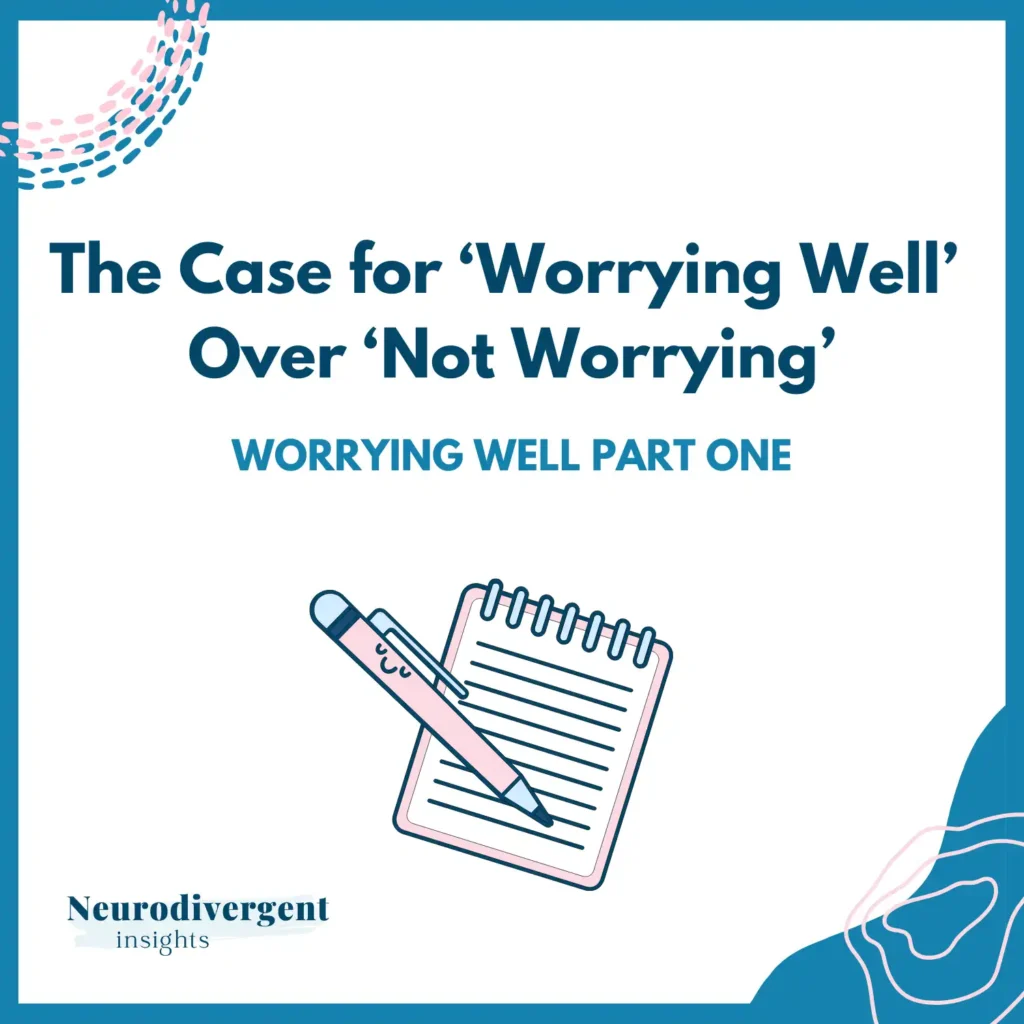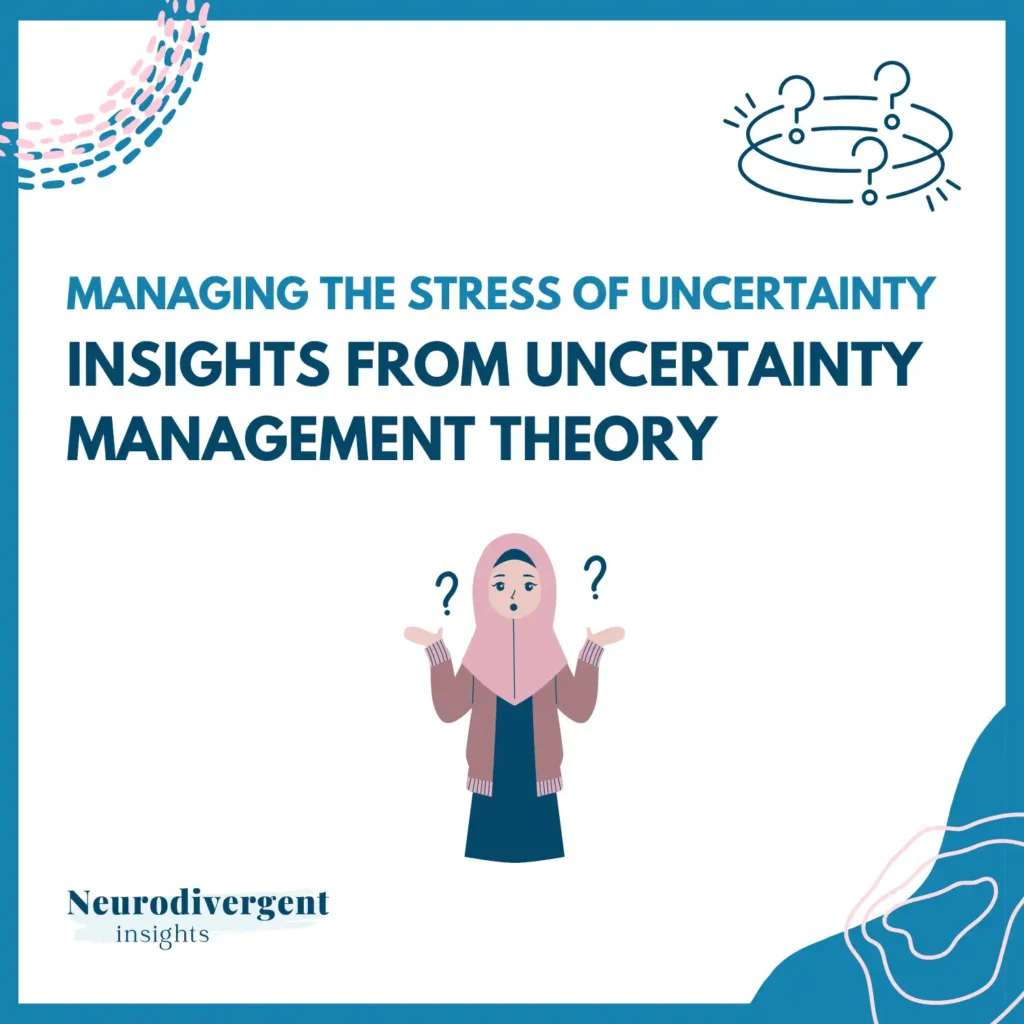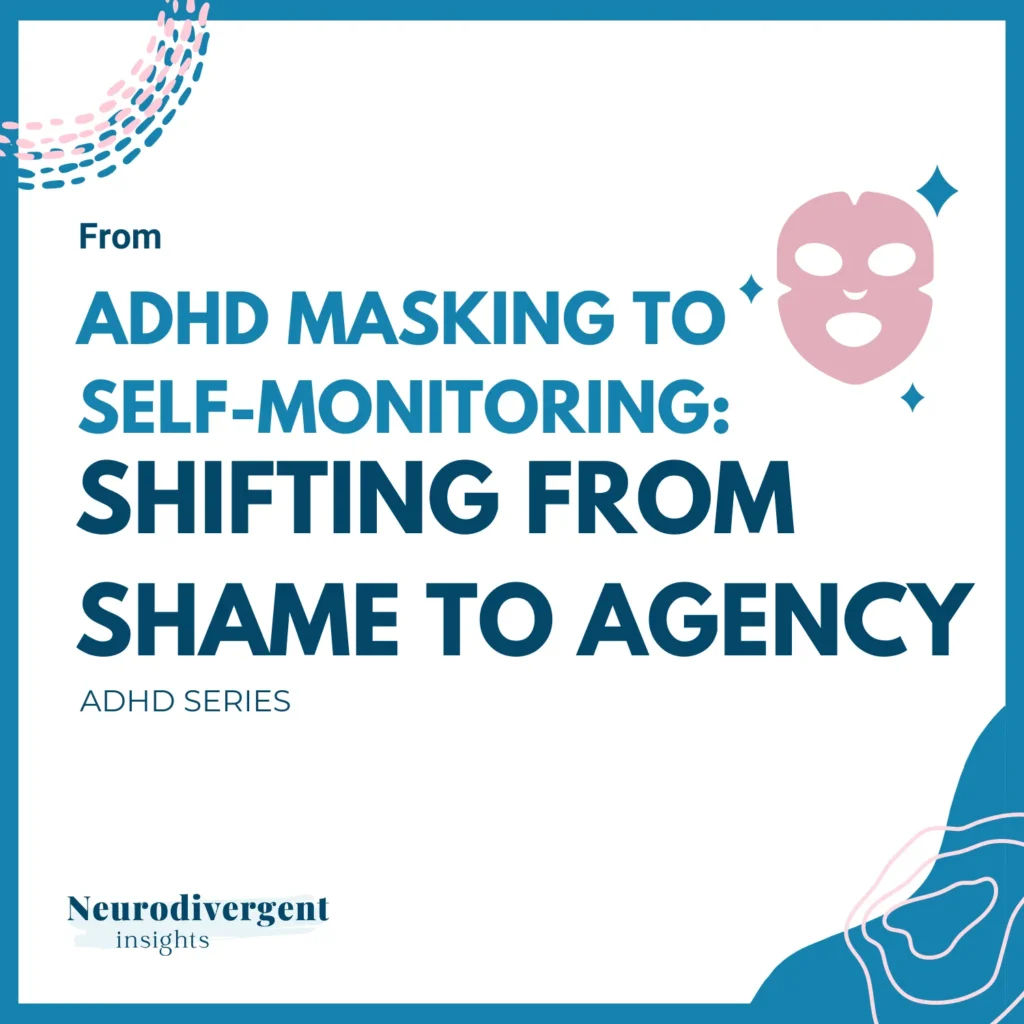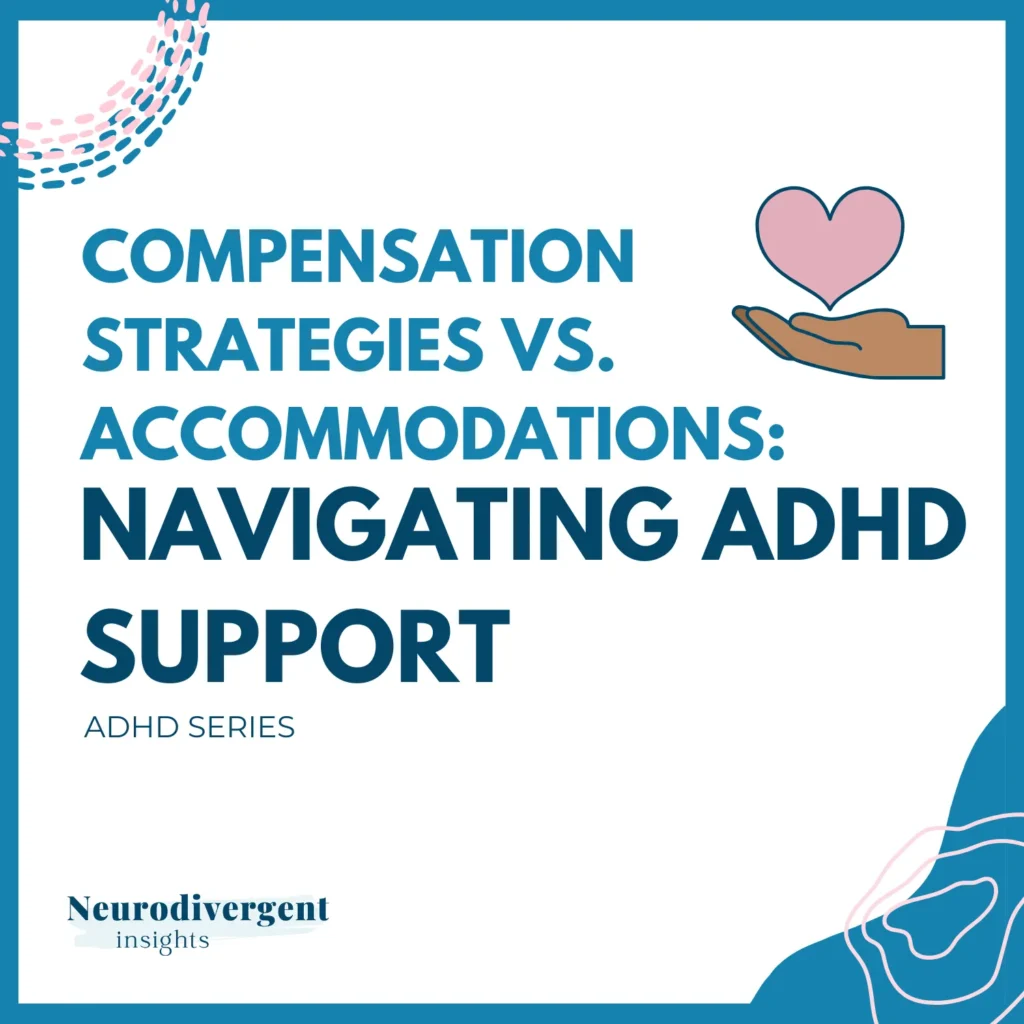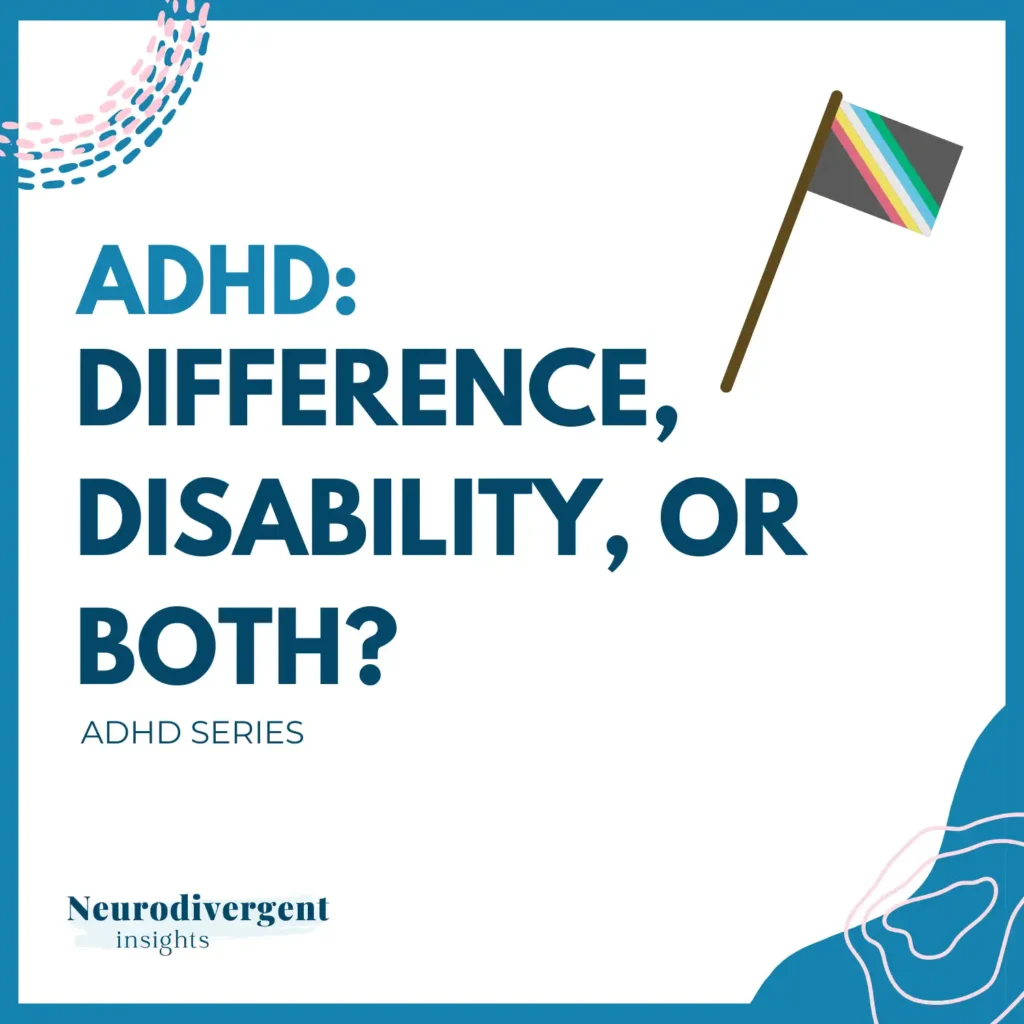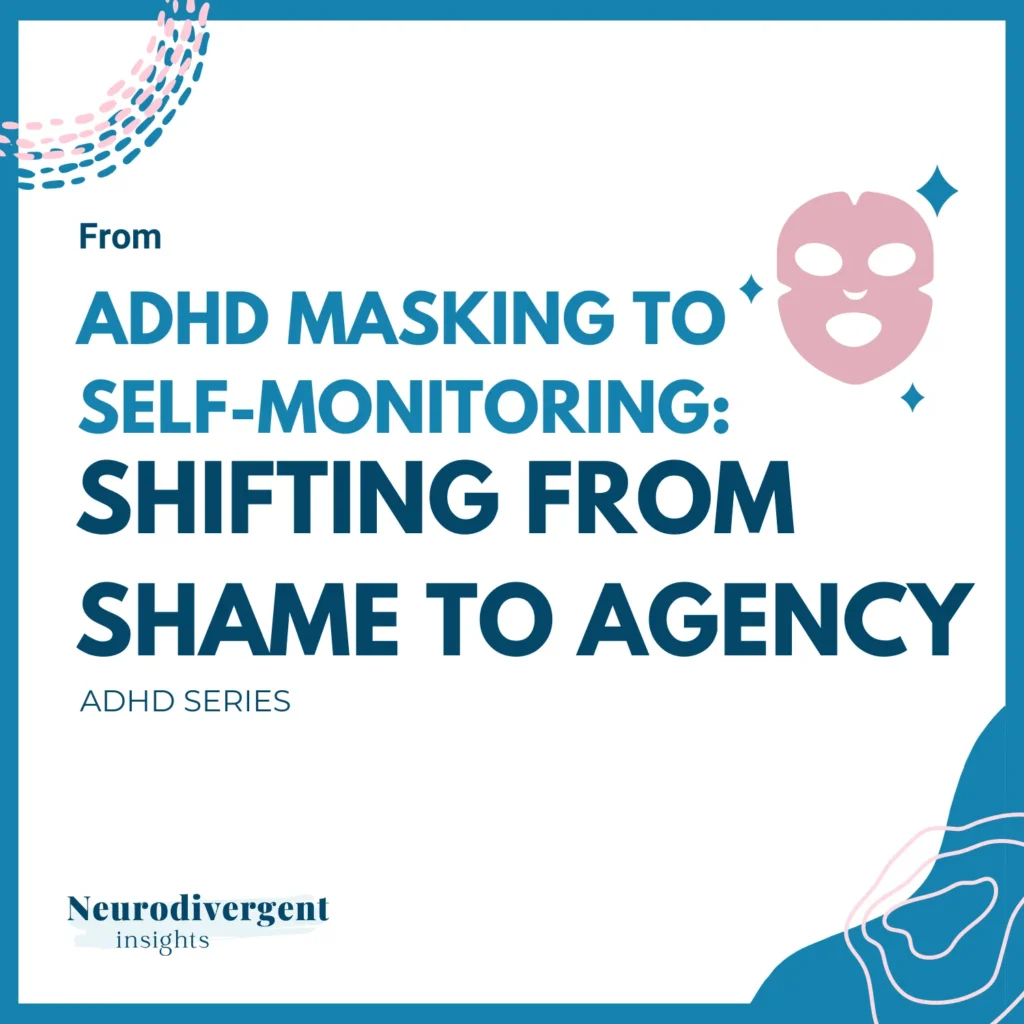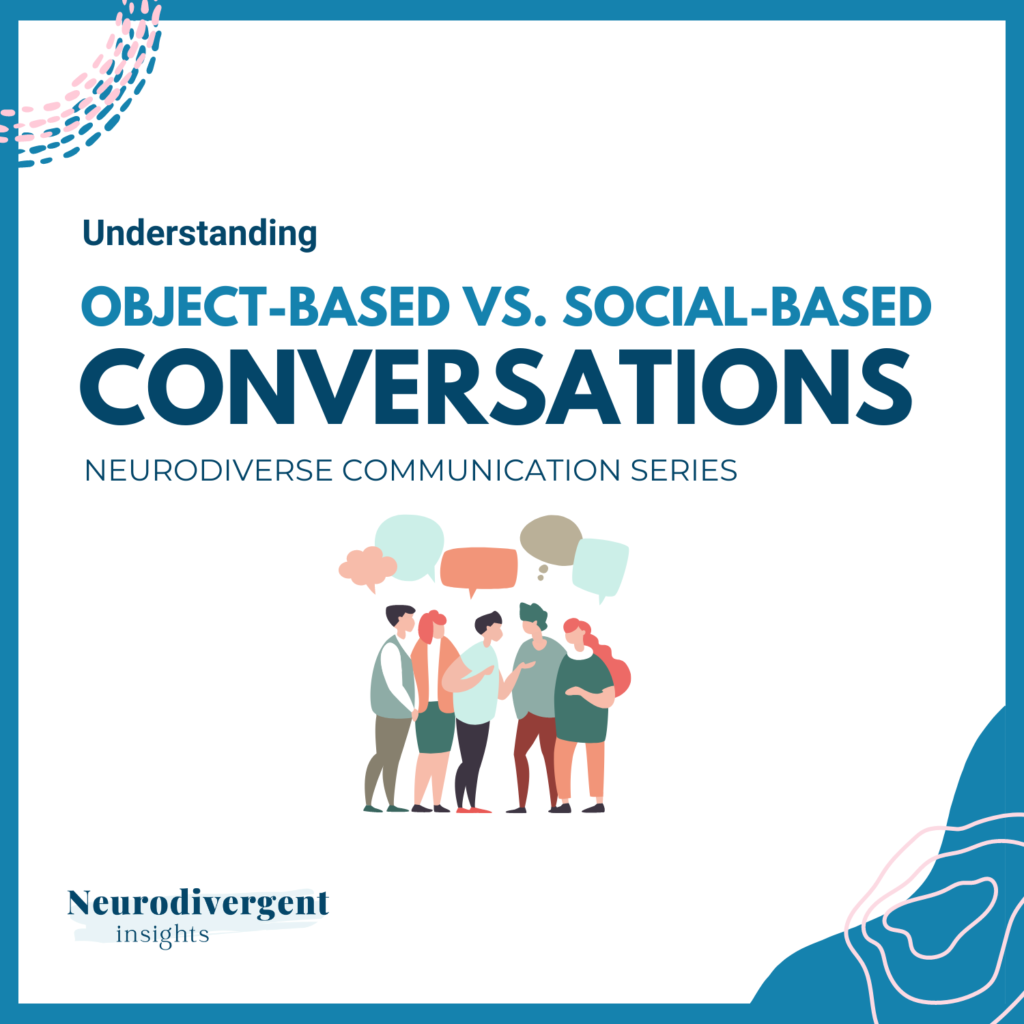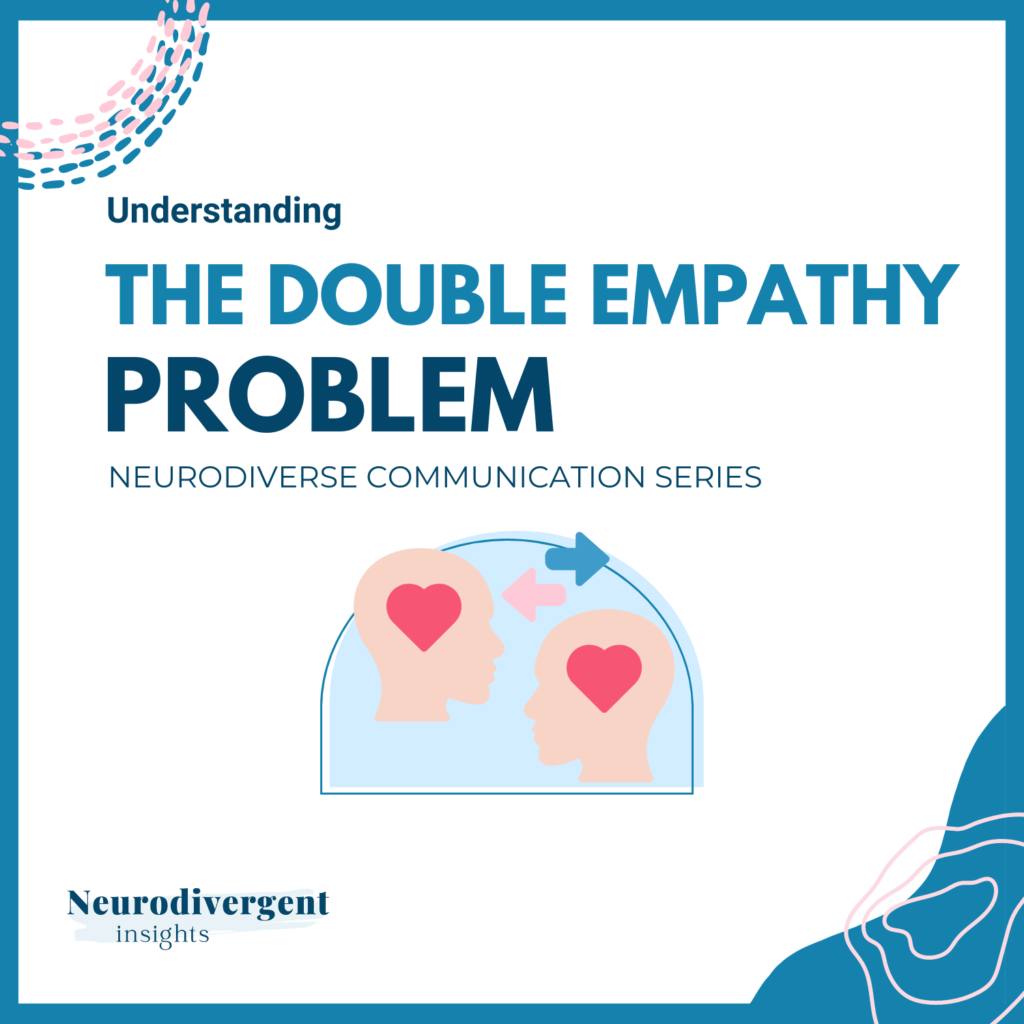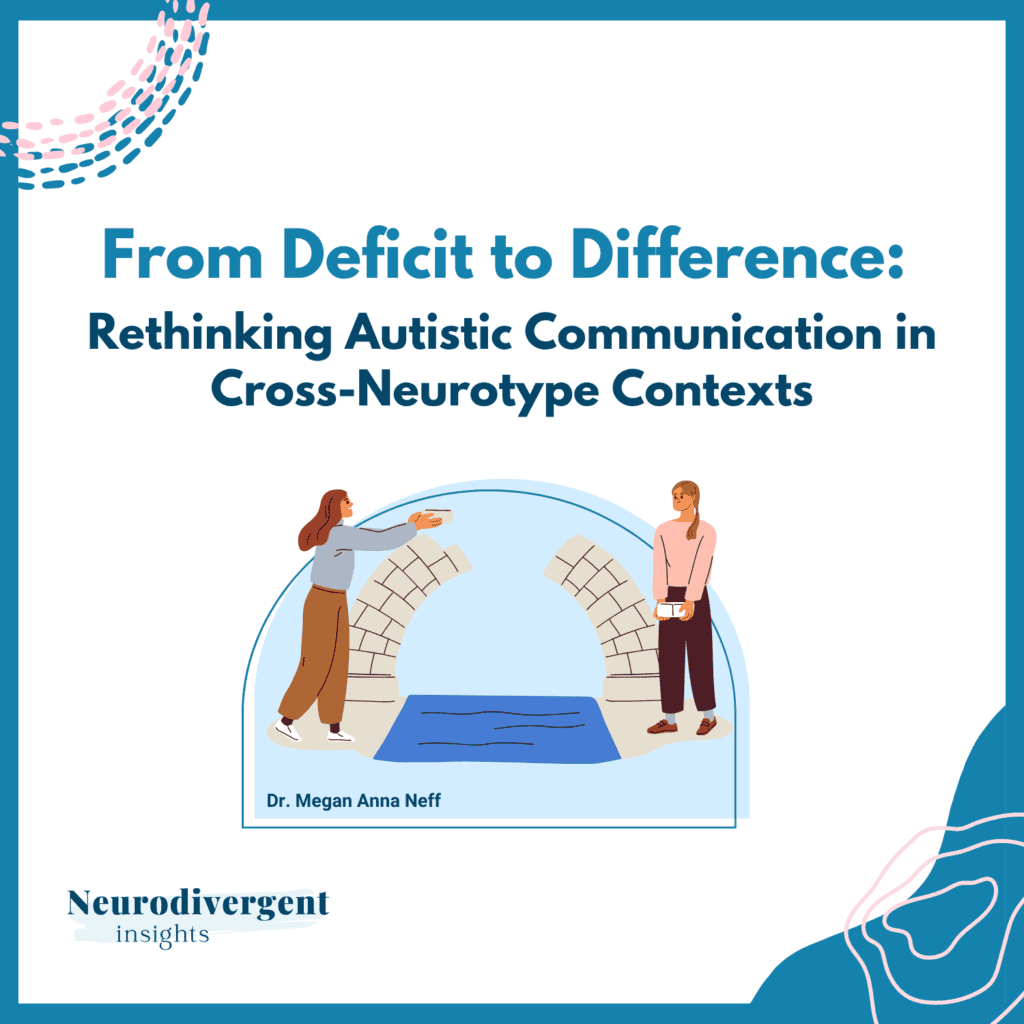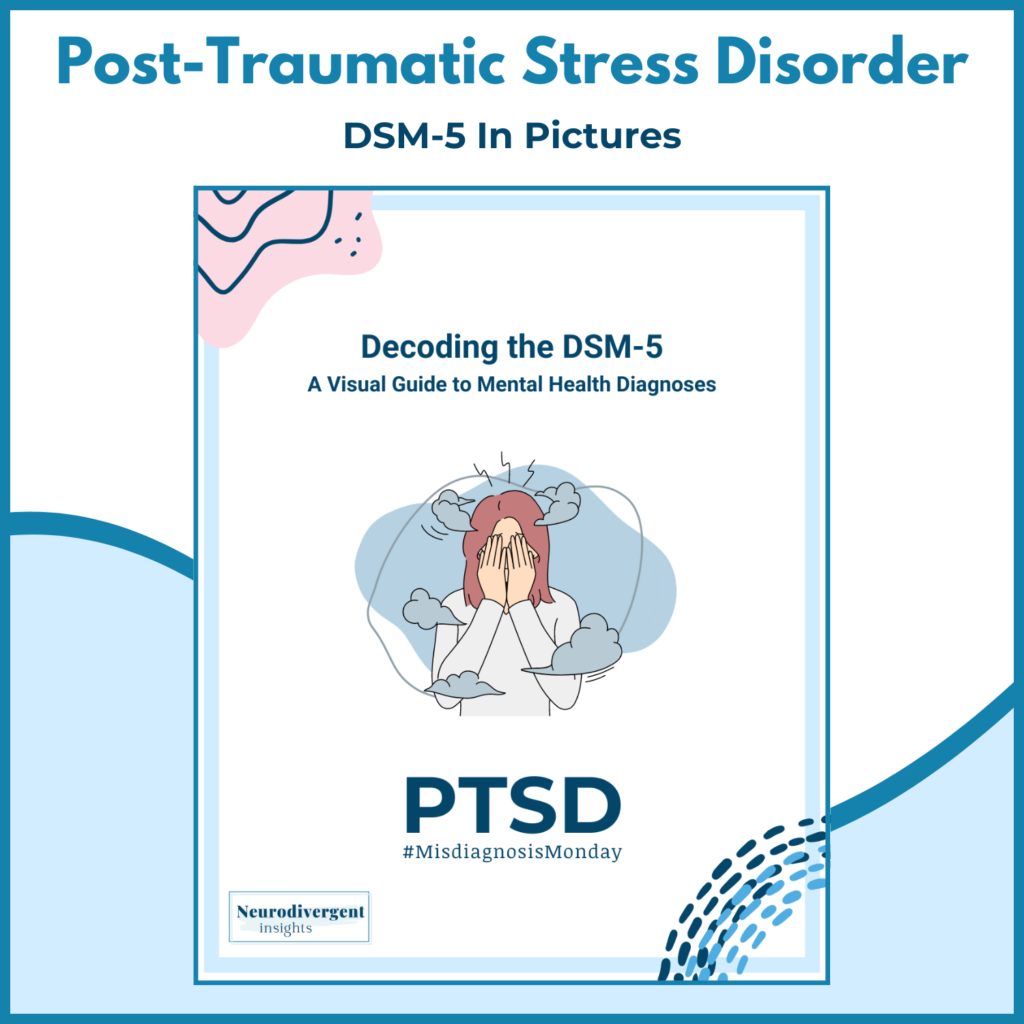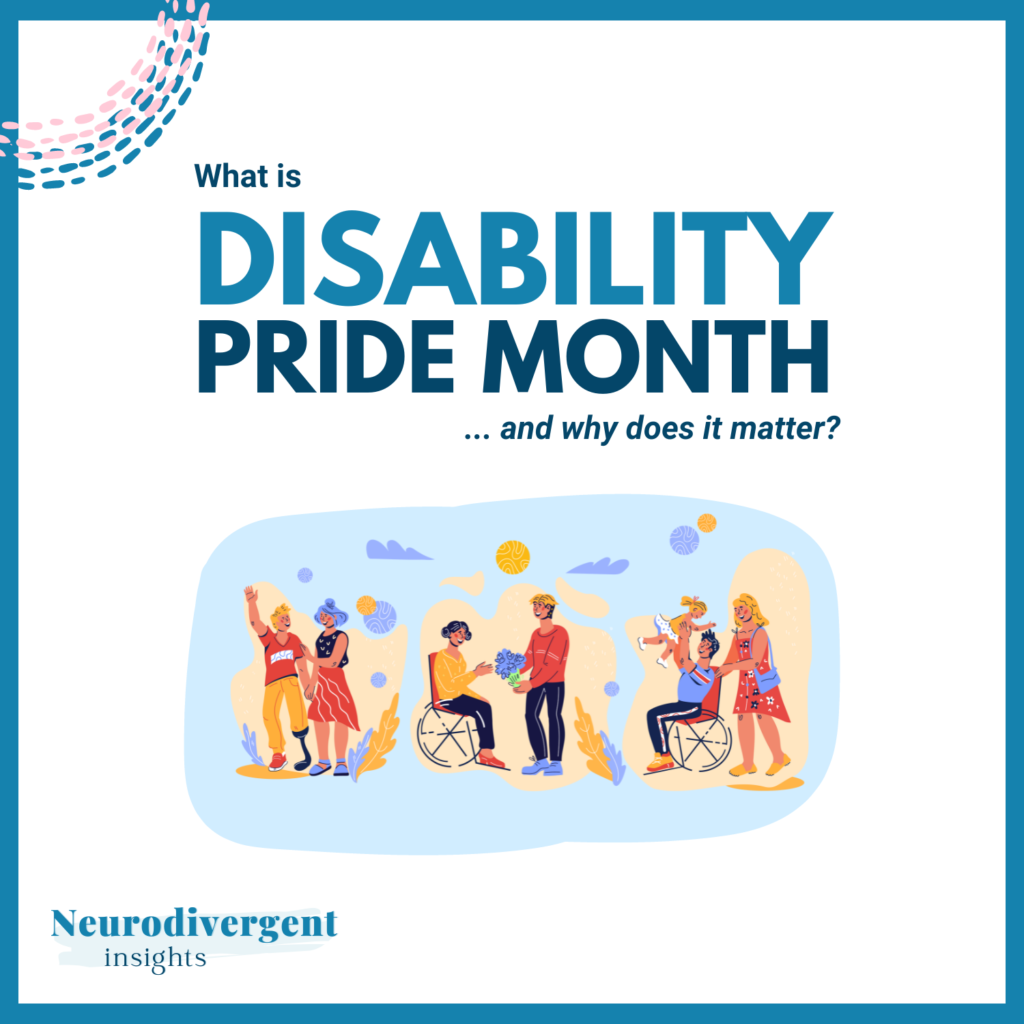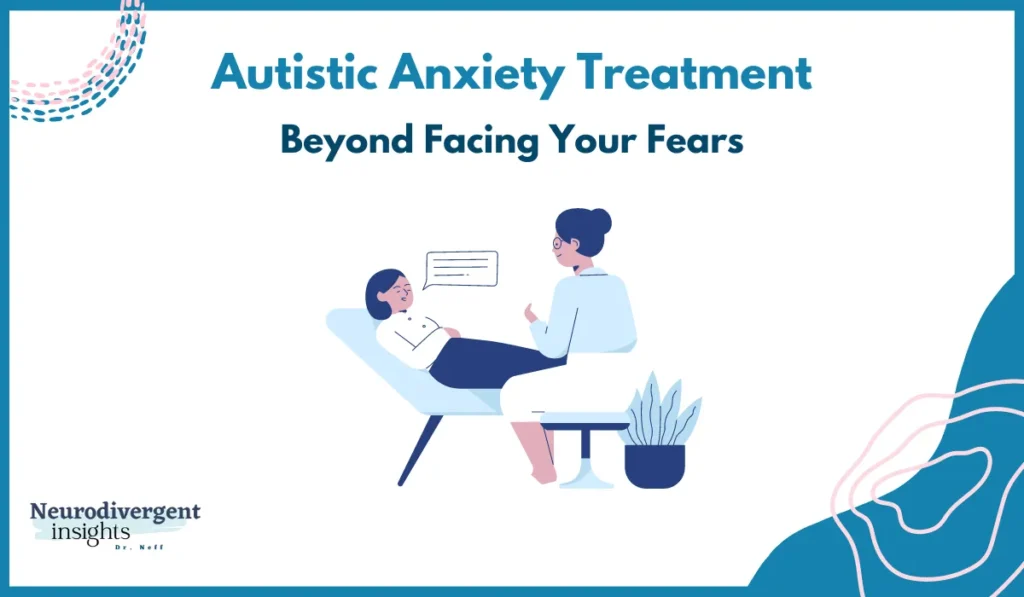
Treatment approaches for anxiety significantly vary between neurotypical and Autistic individuals, reflecting the unique characteristics of Autistic anxiety. Neurotypical anxiety often acts like a misfiring alarm system, signaling danger in safe situations. In contrast, Autistic anxiety not only responds to these typical triggers but also involves anxiety-like experiences characterized by intense overwhelm and dread. This complexity necessitates treatment strategies tailored to address Autistic anxiety. In this article, we will explore standard treatment for anxiety disorders and discuss how these approaches can be adapted for Autistic people.
In neurotypical scenarios, anxiety might stem from anticipatory worries about hypothetical dangers, such as the fear of a car accident or fear of embarrassing yourself. Autistic individuals, however, deal with these common triggers plus additional stressors. These include sudden changes in routine, sensory overloads, or challenging social interactions that are fraught with misunderstandings. For Autistic people, the resulting dread and overwhelm are not mere possibilities; they are anticipated realities rooted in past experiences, rendering the anxiety both intense and predictable.
For instance, I once believed I was merely anxious about attending crowded events, but I later recognized that what I actually experienced was dread, knowing I would be overwhelmed by the sensory input and forced into uncomfortable small talk. This wasn’t simply anxiety; it was sensory and social dread. For those interested in a deeper dive into the differences between neurotypical and Autistic anxiety, I recommend checking out this article about the differences.
Jump to ....
The Benefits of Anxiety Treatment
Anxiety is one of the most common mental health conditions, yet it remains highly treatable. Despite this, many individuals—especially children and teens—do not receive the necessary treatment. In his workshop on understanding anxiety from a strength-based perspective, Dr. Dalton explains that undergoing treatment can often leave young people better off than if they had never experienced anxiety at all. This counterintuitive benefit arises because the process of addressing anxiety often leads to profound personal growth and self-discovery.
During treatment, people learn to prioritize growth over comfort, understanding that fear does not necessarily signify danger. They discover the importance of aligning their actions with their values, rather than letting fear dictate their decisions. Importantly, they learn that it is possible to experience uncomfortable emotions while still engaging in meaningful activities. These are invaluable lessons that equip them with skills to navigate not just anxiety, but many of life’s challenges.
The impact on children and teens of learning these skills during formative years extends far beyond managing anxiety. It prepares young people to handle future stresses and challenges with resilience and confidence, cultivating a mindset that views challenges as opportunities for personal growth. In essence, the strategies and insights gained from effective anxiety treatment can benefit individuals across all areas of life.
Treating Neurotypical Anxiety
The evolutionary purpose of adaptive anxiety is to safeguard us by capturing our attention and steering us away from potentially harmful situations making it an essential, albeit sometimes uncomfortable, aspect of human experience.
Anxiety crosses into disorder territory when it acts like a faulty fire alarm—sending out false alerts about danger in situations that are unnerving but not truly hazardous–or when the intensity of anxiety is out of proportion to the actual risk involved.
Once entrenched, this misdirected anxiety can trap us in a relentless cycle of fear and avoidance, intensifying over time and becoming increasingly challenging from which to to disengage. This section will explore common treatments designed to help individuals break this cycle and regain control over their lives.
Understanding the Avoidance/Anxiety Loop
To understand standard anxiety treatments, it’s helpful to grasp the avoidance/anxiety loop. This trap is a core concept in understanding how anxiety perpetuates itself and how behaviors intended to reduce anxiety in the short term often end up increasing it over time. The loop starts when we encounter a trigger—a situation or thought that evokes anxiety. The natural response is to avoid this trigger to reduce immediate discomfort. For example, someone afraid of social judgment might skip a friend’s party.
Initially, avoiding anxiety triggers brings temporary relief. However, this relief only reinforces the belief that avoidance is the best way to cope. Consequently, each time you decline an invitation, it becomes increasingly difficult to accept the next one. This pattern of avoidance can gradually erode social skills, deepen isolation, and worsen mental health issues, intensifying the cycle of anxiety.
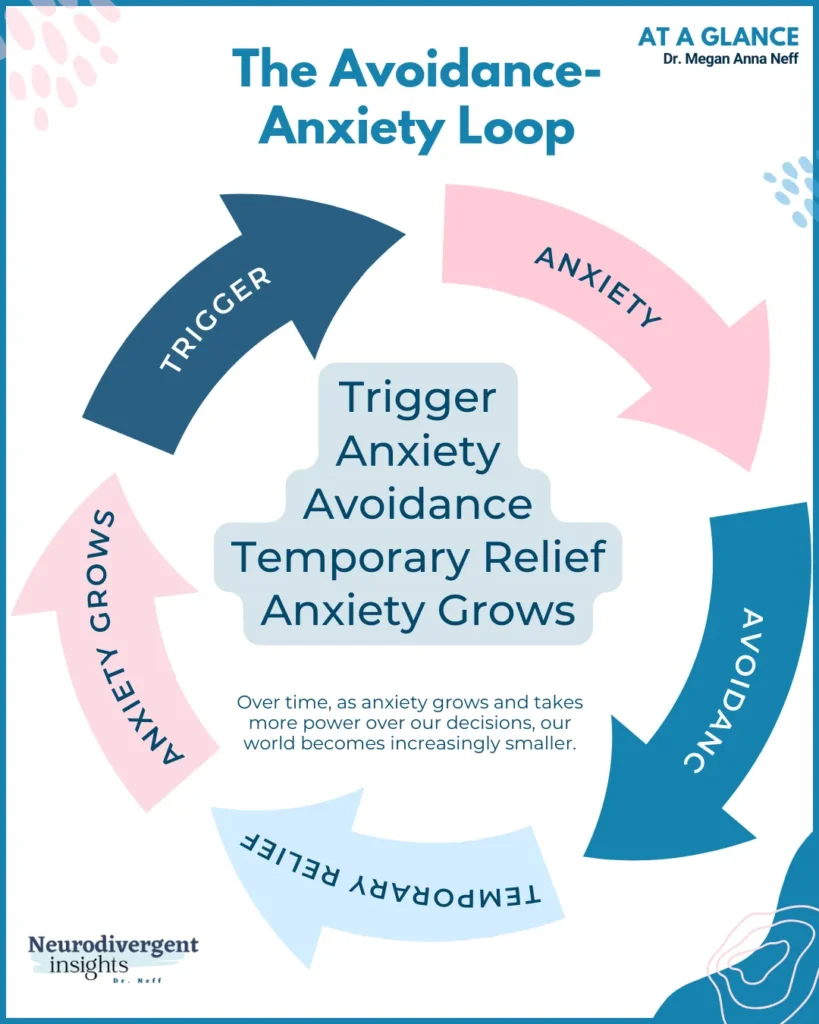
Another detrimental effect of avoidance is that it deprives us of valuable experiences that could demonstrate that our anxious feelings often mislead us. Here is what experience teaches us: just because we feel anxious doesn’t mean we are in danger. Yet, without facing these situations, we lack the opportunity to learn this crucial lesson. Experiences can reveal that the outcomes we fear are usually neither as harmful nor as likely as we imagine. Each encounter we brave can gradually recalibrate our response to anxiety. Through gradually facing feared situations, we learn resilience and gain confidence that we can handle discomfort, which is essential for breaking the cycle of fear and escape.
Understanding Anxiety: The Role of Psychoeducation
At the heart of treating anxiety effectively, there’s something profoundly simple yet powerful: understanding. Psychoeducation is a vital part of anxiety treatment, not just because it arms you with knowledge, but because it helps build a compassionate relationship with yourself as you navigate your symptoms. Here are some core components of psychoeducation:
Recognizing the Body's Response
It’s important to learn about the body’s natural reaction to perceived threats—what you might know as the fight, flight, or freeze responses. Understanding that your racing heart or quickened breath is actually your body trying to protect you can be reassuring and help you to contextualize these experiences. This also helps us to recognize these symptoms as normal responses, not signs of weakness. This knowledge helps us approach our body’s reactions with gentleness instead of panic.
Understanding Anxious Mind
Anxiety often has a field day with our minds, distorting our thinking and turning benign situations into seemingly threatening ones. Learning about the tricks that anxiety plays on our minds occupies a key role in anxiety treatment. It teaches us that anxious thoughts are not the same as facts. This awareness helps us create a healthy distance from our mind when it starts to act up, allowing us to hold these thoughts differently. Instead of accepting these thoughts as truths and getting hooked on them, we learn to see them as mere products of anxiety. This shift in perspective is key to managing anxiety, reducing its influence over our decisions and emotions.
Decoding the Avoidance Loop
A significant part of our learning revolves around the avoidance/anxiety loop. This cycle can be tricky, where avoiding what scares you might seem like relief but actually tightens anxiety’s grip over time. By understanding this pattern, we can start to confront fears in small, manageable steps—turning avoidance into action. Each step is a learning opportunity, proving to yourself that you are more capable than you might believe.
Comprehensive Treatment Strategies
Once a person understands anxiety, they can engage more meaningfully in comprehensive treatment. Here are some core components of a comprehensive approach:
Developing New Skills for Coping
Understanding anxiety is crucial, but knowing how to effectively manage it is equally important. That’s why treatment often focuses on building new coping skills. These skills can range from bottom-up approaches that begin with the body—such as breathing exercises and other techniques to calm the fight-flight-freeze response—to top-down strategies that address cognitive processes.
For example, cognitive defusion and mindfulness-on-the-go are techniques that help individuals observe their thoughts from a distance. By learning these skills, you can hold your thoughts in a way that reduces their power, allowing you to respond to anxiety with more agency.
Addressing Avoidance Behaviors
Addressing avoidance is a cornerstone of effective anxiety treatment. This involves teaching individuals that their feelings of anxiety, while uncomfortable, do not necessarily signal real danger. Gradual exposure to feared situations helps recalibrate the brain’s response, demonstrating that these scenarios are not threats. This not only reduces anxiety but also restores a person’s ability to meaningfully engage in activities they once avoided.
Effectively addressing our avoidance behaviors can fundamentally transform our relationship with anxiety. Dr. Dalton highlights three key ways this transformation occurs:
Overruling Fear as a Decision-Maker: Effective treatment teaches not to let fear automatically guide decisions. It involves recognizing when fear influences choices and consciously deciding to take a different action. This is about understanding that fear doesn’t always indicate true danger and that our actions can align more closely with long-term goals and values.
Prioritizing Growth Over Discomfort: Treatment often reveals that real growth comes from facing discomfort. This principle encourages viewing uncomfortable situations not as threats, but as opportunities to strengthen and develop oneself.
Recognizing Your Capability to Handle Challenges: Treatment aims to boost confidence in handling life’s challenges. It builds trust in one’s own strength and capabilities, reducing the power anxiety has over actions and encouraging fuller engagement in life.
These strategies are about changing how we view and react to anxiety. It’s not just about managing symptoms—it’s about fundamentally altering our relationship with fear and discomfort.
Key Strategies in Reducing Avoidance
When addressing avoidance, here are some strategies that might be used:
Gradual Exposure: Begins with slightly uncomfortable situations and progresses to more challenging ones. This approach helps you build distress tolerance and confidence in a scaffolded manner. A therapist may help create a hierarchy of fears to tackle increasingly difficult tasks over time.
Reducing Accommodation: Accommodations in the context of anxiety refer to adjustments or changes made to avoid anxiety-triggering situations. Confronting these directly and reducing accommodations teaches the brain to recalibrate its response to perceived threats, recognizing that many feared situations are manageable.
Educational Support: Psychoeducation is a crucial part of treatment, helping you understand how anxiety can distort your perception of your surroundings. Recognizing the difference between real danger and anxiety-induced misinterpretations is essential for effectively managing your responses to your environment.
These strategies aim to do more than just help you cope with anxiety; they are designed to change your relationship with it. By learning to face your fears safely, you gain not only a sense of accomplishment but also empowerment. You are guided to reduce avoidance behaviors and to rethink how you perceive triggers, recognizing that anxiety, ultimately, is just a sensation. With increased exposure to anxiety triggers in controlled, safe environments, you and your brain gradually learn that these situations are not threatening, leading to a steady reduction in anxiety levels. This process not only mitigates anxiety but also strengthens your overall capacity to navigate life’s challenges.
Medications in Anxiety Treatment
Medications are sometimes prescribed as part of a comprehensive anxiety treatment plan, particularly when anxiety symptoms are severe. The primary goal of using medication is not to serve as a standalone solution but to enable individuals to participate more fully in other therapeutic activities. By taking the edge off the intensity of anxiety symptoms, medication can help break the cycle of avoidance, making it easier for individuals to confront situations from which they would typically shy away.
For instance, medications can provide a necessary buffer, reducing the overwhelming sensations of anxiety so that the individual feels capable of engaging in exposure therapy or cognitive techniques. This support is crucial because it allows the person to focus on the therapeutic activities where long-term learning and adaptation take place.
Ideally, medication should be used in conjunction with therapy, ensuring that while the immediate symptoms are managed pharmacologically, the underlying cognitive and behavioral patterns are addressed through psychoeducation and skill development. This dual approach helps ensure that the benefits of anxiety treatment are sustained over time, beyond the course of medication.
Treating Autistic Anxiety
When treating Autistic anxiety, we apply many of the same principles as those used for neurotypical anxiety, but several adaptations are necessary to meet the specific needs of Autistic people. Here are some key adaptations in the treatment approach:
#1) Distinguishing Between Anxiety and Anxiety-Like Experiences
While many Autistic people may be diagnosed with an anxiety disorder, they often also encounter what can be described as anxiety-like experiences, including sensory overload, social dread, and a pervasive sense of being overwhelmed. It is crucial in the treatment of anxiety in Autistic people to differentiate true anxiety disorders from these anxiety-like experiences, which primarily stem from sensory sensitivities or complex social interactions.
Understanding the Distinction
Many Autistic people may not have specific language to describe their experiences, commonly referring to various discomforts simply as “anxiety.” Therapists and caregivers might also misinterpret these responses as typical anxiety. It’s essential to tease apart these different experiences because the treatment strategies for them diverge significantly.
Anxiety-Like Experiences: These often stem from sensory sensitivities or difficulties in navigating social interactions with allistic (non-Autistic) people. For example, sensory overload from loud environments or complex social cues can create intense discomfort that resembles anxiety.
True Anxiety: This refers to more typical anxiety responses that are not directly linked to sensory inputs or immediate social misunderstandings but rather manifest as pervasive, generalized fears. Often cognitive in nature, true anxiety frequently presents as a series of “what if” scenarios, where the mind continually focuses on potential future events.
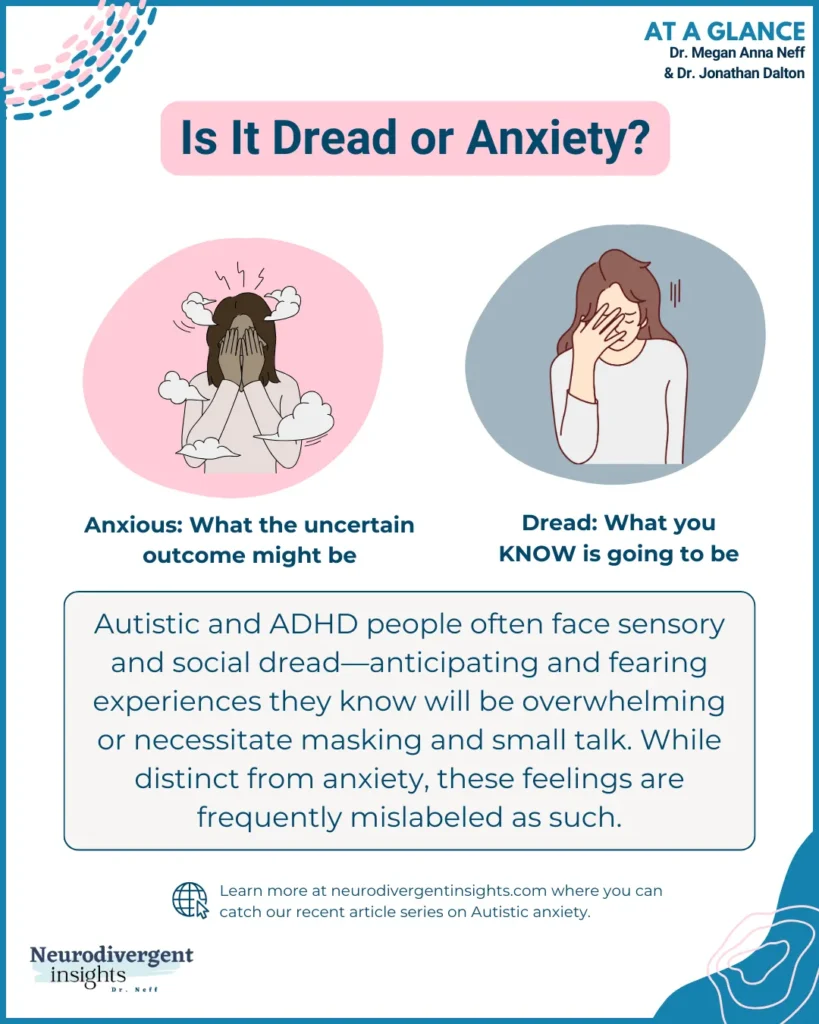
Adapting Treatment Approaches
For anxiety-like experiences that are primarily sensory-based or related to complex social environments, the goal is to increase accommodations rather than decrease them. This could involve:
Creating Sensory-Friendly Environments: Using tools like noise-canceling headphones, adjusting lighting, or modifying the physical setup to reduce sensory input.
Enhancing Predictability and Structure: Providing clear schedules, routines, and expectations can reduce the stress of unpredictability and help manage social anxiety by outlining social scripts in advance.
Increasing Accurate Communication: Using direct and literal language without ambiguity can help reduce the uncertainty and anxiety often associated with navigating confusing social interactions with allistic (non-autistic) individuals.
Conversely, when dealing with more traditional forms of anxiety, the focus may shift towards typical anxiety-reducing strategies like gradual exposure and coping techniques, which help build coping skills and resilience.
Recognizing and Reacting to Meltdowns
Distinguishing between a sensory meltdown and anxiety is crucial, as each requires different responses. For a meltdown, immediate strategies like sensory regulation practices and distraction with a topic of interest are helpful. These methods help the individual ground and self-soothe. In contrast, using distraction for anxiety might be counterproductive as it can reinforce avoidance behaviors.
Distinguishing between a sensory meltdown and anxiety is crucial, as each requires different responses. For a sensory meltdown, which is often triggered by overwhelming sensory input, immediate strategies like sensory regulation practices are essential. For instance, if an individual feels overwhelmed by their envioronment, reducing noise, helping them find a quiet space or providing sensory supports like noise-canceling headphones can help them regain control. You may also help them to regroup by engaging them in a favorite activity or discussing a topic of deep interest which can serve as effective distractions that helps them to ground and self-soothe.
In contrast, when dealing with anxiety using distraction can sometimes be counterproductive. For example, if someone is anxious about an upcoming test, distracting them with a different activity might temporarily ease their stress but can also reinforce avoidance behaviors, preventing them from facing and processing their anxiety about the test. Distractions can provide temporary relief but ultimately may not help a person develop the skills or mindset needed to manage anxiety effectively. Instead, strategies that directly address the source of anxiety, such as talking through their concerns or practicing relaxation techniques, might be more effective.
#2) Understand Autistic Anxiety Triggers
In addition to anxiety-like experiences, Autistic people often encounter unique triggers for anxiety. Recognizing and properly accommodating these triggers is a key part of adapting anxiety treatment for Autistic people.
Common Autistic Anxiety Triggers
Disruption of Predictability and Routine: Autistic people rely heavily on predictability, routine, and knowing what to expect, which help us to mentally and emotionally prepare for various situations. When this predictability is disrupted—whether through changes in environment, schedule, or unexpected events—it can cause significant anxiety. Personally, when I experience a routine disruption I experience this as “free floating” anxiety–a diffuse and general sense that things are not alright.
Social Script Deviations: Unlike allistic brains, Autistic brains may struggle more with predicting future events and picking up contextual cues subcortically. Consequently, Autistic people often rely on internalized scripts or templates for navigating social interactions. When these templates do not align with actual events it can cause considerable uncertainty and anxiety. This is especially true when conversations deviate from expected patterns or when there are sudden changes in social plans or settings that introduce unfamiliar elements.
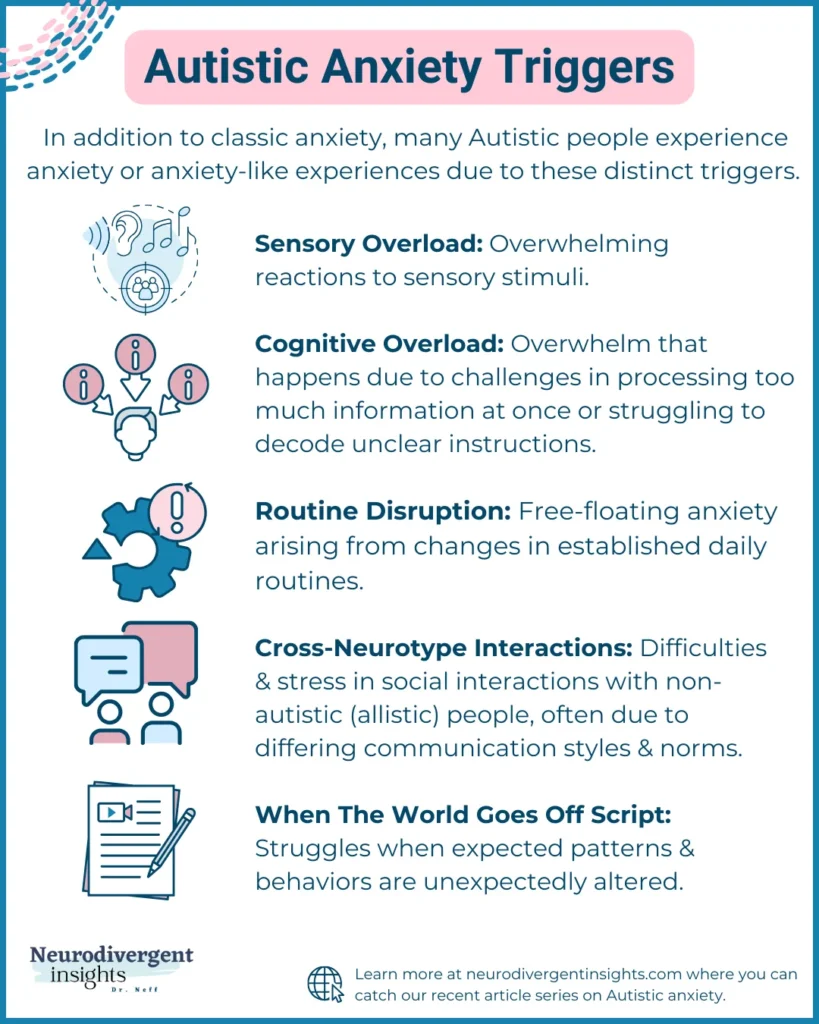
Cross-Neurotype Interactions: Many Autistic people find interactions with non-Autistic (allistic) people challenging due to differences in communication styles and social expectations. Studies indicate that while Autistic people often connect well with each other, we experience more communication breakdowns and misunderstandings with non-Autistic individuals. These cross-neurotype interactions can heighten feelings of social confusion, significantly increasing anxiety and stress.
Strategies to Address These Triggers
Enhanced Preparation and Predictability: Where possible, maintaining a high level of predictability in daily routines can help manage anxiety. For changes that are necessary, providing clear communication in advance and visual aids (like schedules or calendars) can ease transitions.
Strengthening Routine and Environmental Control: Maintaining a consistent routine is key. When changes are necessary, introducing them gradually and with ample forewarning can help Autistic people adjust without significant anxiety. Where possible, allowing the person to have control over their environment and schedule reinforces a sense of security and predictability.
Structured Social Scripts and Clear Communication: To mitigate anxiety stemming from cross-neurotype interactions, it’s helpful to educate both Autistic people and their non-autistic peers on the double-empathy problem to help contextualize their differing experiences. Advocating for clear, direct communication can significantly enhance understanding on both sides. Teaching the importance of using literal and straightforward language helps reduce ambiguities and misunderstandings, setting clearer expectations and simplifying social exchanges. For many Autistic people scripting their conversations ahead of time also helps to reduce anxiety and uncertainty when socializing with allistic people.
Understanding these specific anxiety triggers for Autistic people is not just about tailoring treatment strategies. It’s about considering whether the individual would benefit from additional accommodations, preparation, or education to better navigate these triggers. More than merely mitigating anxiety, it’s important to ensure that Autistic people have the necessary support and resources, recognizing that their anxiety often stems from navigating a world that is inherently misaligned with their brain style.
#3) Exposure Plus Accommodations
To effectively treat Autistic anxiety, it’s important to acknowledge that traditional exposure therapy, often effective for neurotypical individuals, can be inappropriate for Autistic people. Repeatedly facing overwhelming situations or those inducing dread does not lessen their impact for Autistic people; it may reinforce the discomfort experienced each time.
Inappropriateness of Pure Exposure and Understanding the Need for Accommodations
Exposing an Autistic person to environments with intense sensory inputs, such as a public restroom equipped with loud, harsh air blowers does not alleviate the physical discomfort caused by the noise. Regardless of exposure frequency, the sensory assault remains as intolerable as ever due to the heightened sensory sensitivity common among Autistic people. This highlights the inappropriateness of a pure exposure approach to all situations.
Examples Where Exposure is Not Appropriate
Persistent Sensory Challenges: Autistic people exposed to overwhelming sensory environments, like noisy public spaces, do not experience diminished distress over time. Instead, the physical discomfort remains constant, leading to increased avoidance behaviors. Accommodations such as using noise-canceling headphones or providing access to quieter, less crowded spaces are essential to manage these sensory challenges.
Complex Social Interactions: Social scenarios that deviate from expected scripts can provoke persistent anxiety due to difficulties in processing unpredictable social cues.
Identifying Anxiety
Effective treatment of Autistic anxiety requires differentiating true anxiety symptoms from sensory or cognitive overloads.
Identifying “What If” Scenarios: These scenarios often reflect cognitive anxieties, such as “What if I can’t find a bathroom?” or “What if there’s an accident while driving?” Addressing these concerns involves specific anxiety treatment techniques that focus on cognitive restructuring and exposure methods tailored to cognitive fears, once sensory and cognitive overloads are adequately managed.
Tailoring the Exposure Approach
Integrating accommodations with exposure therapy involves several key steps:
Identifying Specific Needs: Begin by distinguishing between anxieties that are rooted in “what if” scenarios (which are amenable to traditional exposure strategies) and those stemming from sensory overload or cognitive overwhelm. This distinction helps tailor interventions more precisely to the needs of the individual.
Incorporating Sensory Accommodations: For sensory-sensitive individuals, integrating accommodations like using noise-canceling headphones, choosing quieter locations, or modifying the lighting can make necessary exposures more tolerable and less anxiety-inducing.
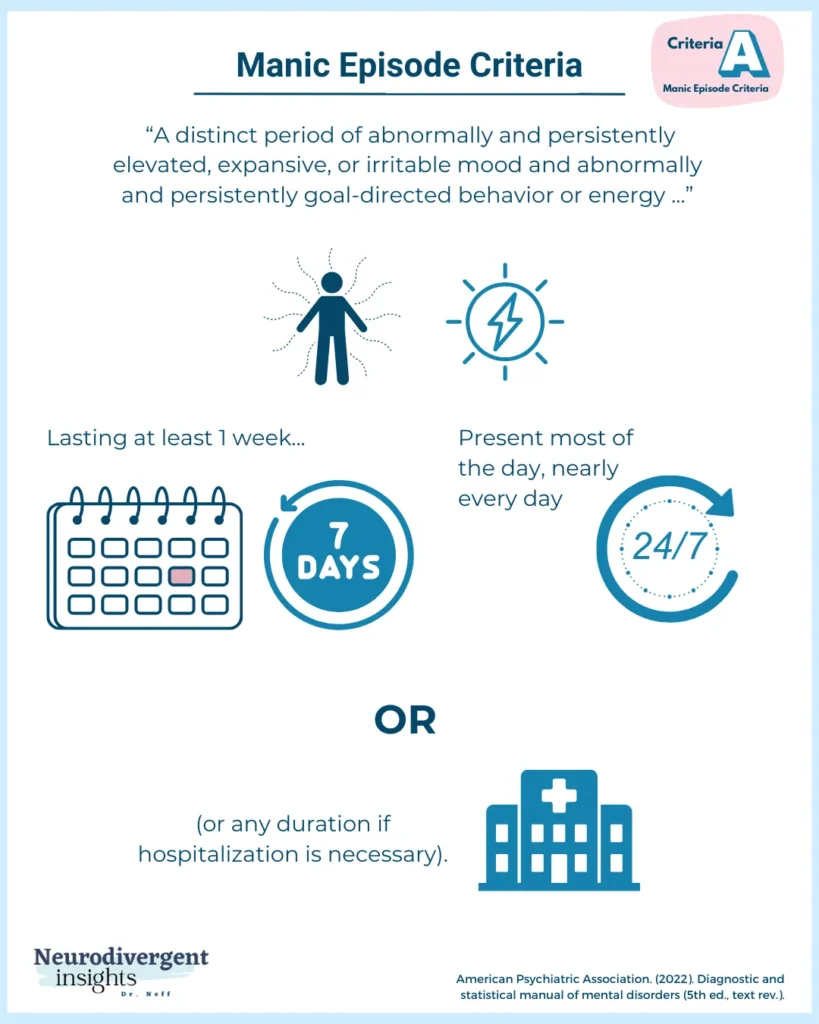
Implementing Graduated Exposure with Accommodations: Once accommodations are in place to manage the sensory or cognitive overloads, you can then gradually introduce more traditional exposure elements to address classic anxiety symptoms.
Slowly Increasing Exposure Intensity: Start with less intense versions of the feared situation and gradually increase the complexity or duration as the individual becomes more comfortable, ensuring the accommodations continue to be adjusted as needed.
Integrating exposure alongside appropriate accommodations allows for a more holistic and effective approach to treating Autistic anxiety. By understanding the unique challenges faced by Autistic people and adapting therapy to include necessary supports, therapists can help reduce anxiety while promoting greater resilience and adaptation to challenging situations.
In order to fully treat Autistic anxiety we recognize that some of these layers don’t get better with exposure. Both overwhelm and dread don’t decrease the more often you face the situation. Pure exposure reinforces that these situations are always going to be uncomfortable and overwhelming. It isn’t like neurotypical anxiety where repeated exposure to non-poisonous snakes teaches the person that they are safe.
Conclusion
Effectively treating anxiety requires a nuanced understanding of the individual’s neurology, particularly when addressing the needs of neurodivergent people. Recognizing whether someone is neurodivergent—or if there is a suspicion they might be—is crucial as it fundamentally alters the therapeutic approach and treatment protocols.
For neurotypical individuals, traditional anxiety treatments often focus on reducing accommodation as a means to confront and diminish anxiety. However, treating Autistic anxiety necessitates a markedly different strategy. Due to the unique challenges faced by Autistic people such as overwhelming sensory environments, social script deviations, and distinct anxiety triggers; accommodations become not only helpful but essential. These accommodations aim to reduce sensory overload and manage cognitive overwhelm, providing a supportive framework that allows the individual to engage with therapy more effectively.
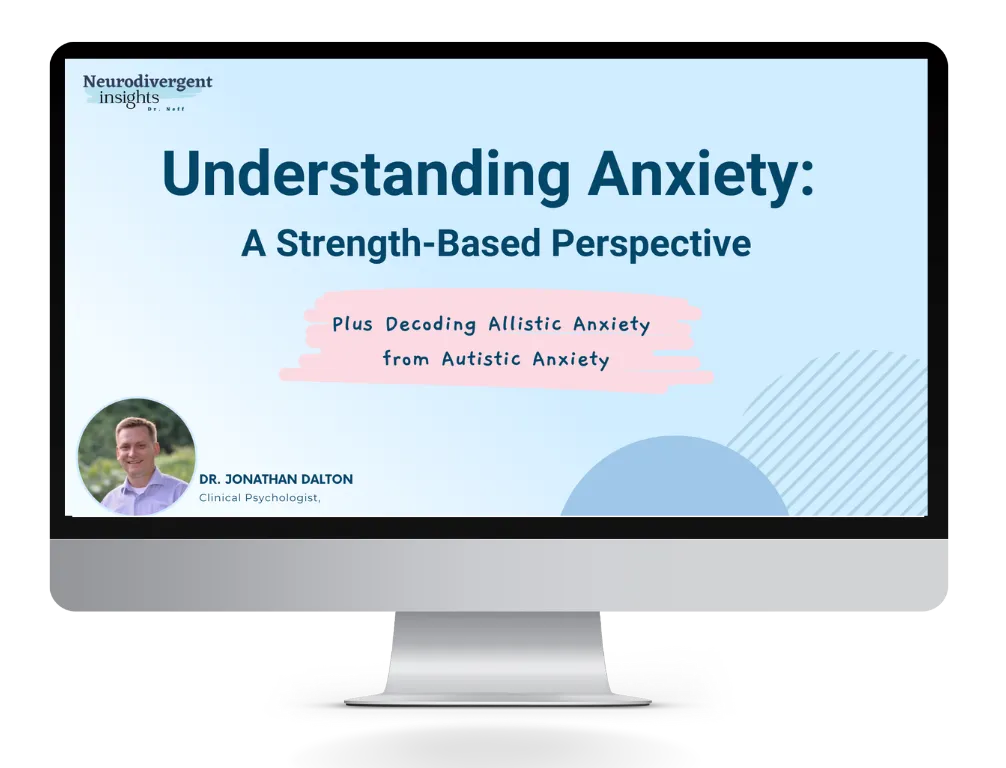
In both cases, understanding the underlying causes of anxiety, whether they stem from cognitive “what ifs” or sensory sensitivities, allows therapists to tailor their interventions. For those interested in exploring these concepts further and learning about specific strategies for managing anxiety in Autistic populations, I recommend attending the anxiety workshop led by Dr. Dalton, which delves deeper into these topics (you can purchase the recording here).
Ultimately, the goal of adapted anxiety treatment is to ensure that all individuals, regardless of their neurological makeup, can receive support that is respectful, understanding, and most importantly, effective. By accommodating the distinct needs of Autistic individuals while challenging anxiety directly when appropriate, we will create a more inclusive and empowering approach to mental health.
Understanding Anxiety: A Strength-Based Perspective
References
Dalton, J. (2023)Understanding anxiety: A strength-based perspective. [Presentation]. Neurodivergent Insights Masterclass.

